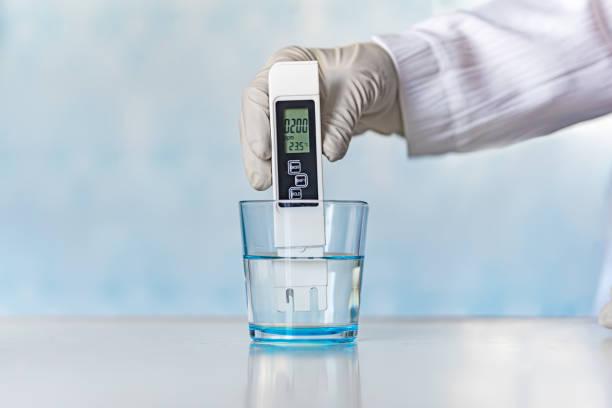Future of Water Quality Sensors: Trends in IoT-Enabled pH Monitoring

Introduction
The monitoring of water quality has become a critical aspect of environmental management, industrial processes, and public health. Advances in technology are reshaping how we measure and maintain water safety, particularly through the use of innovative devices like RIKA Sensor water pH sensors. These sensors provide real-time data that is essential for detecting changes in water chemistry, ensuring compliance with safety standards, and supporting sustainable water management practices. As the demand for smart and connected monitoring systems grows, the integration of IoT (Internet of Things) technologies with water pH sensors is revolutionizing water quality management.
Rika Sensor has emerged as a leading provider of high-precision water pH sensors designed for diverse applications, from industrial water systems to aquaculture and environmental monitoring. The company’s sensors are equipped with advanced features such as low-impedance glass membranes, temperature compensation, and anti-hydrolysis designs. These attributes make them highly reliable, even in challenging environments such as high-temperature industrial settings or corrosive wastewater. The combination of durability, accuracy, and ease of use positions RIKA Sensor as a key player in the future of smart water monitoring.
The Rise of IoT in Water Quality Monitoring
The Internet of Things has transformed the way industries approach environmental monitoring. IoT-enabled water pH sensors allow for continuous, real-time measurement of water chemistry, eliminating the need for manual sampling and reducing the risk of errors. With sensors connected to cloud platforms, data can be analyzed remotely, enabling faster decision-making and proactive management of water systems. This is particularly valuable for industries such as chemical manufacturing, aquaculture, and municipal water treatment, where timely information is critical for maintaining safety and efficiency.
Incorporating IoT technology with RIKA Sensor devices also enhances predictive maintenance and operational efficiency. By analyzing trends in pH levels and other water quality indicators, organizations can identify potential issues before they escalate into major problems. The integration of IoT platforms supports automated alerts, remote calibration, and centralized monitoring, creating a comprehensive system that streamlines water quality management and ensures compliance with regulatory standards.
Innovations in Water pH Sensor Technology
Modern water pH sensors have evolved significantly from traditional devices, offering a range of innovations that improve accuracy, reliability, and usability. RIKA Sensor water pH sensor feature low-impedance glass membranes that provide rapid response times, typically within 8–10 seconds in flowing liquids. This fast measurement capability is essential for dynamic systems where water chemistry can fluctuate quickly. Additionally, built-in temperature compensation ensures stable readings across different thermal environments, reducing the need for complex manual calibrations.
Anti-hydrolysis technology is another key advancement found in RIKA Sensor products. This feature prevents errors in alkaline environments, a common challenge in industrial and environmental applications. The sensors’ robust construction, including waterproof connectors and IP68-rated models, enables them to operate reliably in harsh conditions. With multiple thread and connector options, these sensors are highly adaptable, making them suitable for a wide range of water monitoring scenarios.
Applications Across Industries
Water pH sensors play a crucial role in multiple industries, demonstrating the versatility and importance of RIKA Sensor technology. In aquaculture, maintaining optimal pH levels is essential for the health and growth of aquatic organisms. Real-time monitoring allows for immediate adjustments to water chemistry, ensuring a stable environment. Similarly, in water treatment plants, precise pH measurements are necessary for effective chemical dosing and compliance with environmental regulations.
Industrial processes also benefit from the integration of high-performance pH sensors. Chemical plants, food processing facilities, and manufacturing units rely on accurate water pH monitoring to protect equipment, optimize processes, and ensure product quality. The ability of RIKA Sensor devices to function reliably in high-temperature, corrosive, or otherwise challenging environments makes them indispensable tools for process optimization and regulatory compliance.
Future Trends in IoT-Enabled pH Monitoring
Looking ahead, the future of water quality monitoring is closely linked to the advancement of IoT technologies and smart sensor integration. Next-generation water pH sensors are expected to feature enhanced connectivity, improved energy efficiency, and advanced data analytics capabilities. These developments will enable more sophisticated monitoring systems capable of predicting water quality changes, optimizing treatment processes, and reducing operational costs.
Integration with artificial intelligence and machine learning will further enhance the utility of RIKA Sensor devices. By leveraging historical data and predictive models, water management systems can anticipate fluctuations in pH levels and other critical parameters. This proactive approach will not only improve safety and compliance but also contribute to more sustainable water management practices. As IoT-enabled sensors become more widespread, industries and municipalities alike will benefit from smarter, data-driven water monitoring solutions.
Conclusion
The landscape of water quality monitoring is undergoing a significant transformation, driven by the rise of IoT-enabled sensors and innovations in sensor technology. RIKA Sensor water pH sensors are at the forefront of this change, providing accurate, reliable, and real-time data that empowers industries and municipalities to manage water resources effectively. With advancements in IoT, predictive analytics, and sensor design, the future promises a more intelligent, connected, and sustainable approach to water quality management. Embracing these technologies today ensures safer water, improved operational efficiency, and stronger environmental stewardship for tomorrow.
- AI
- Vitamins
- Health
- Admin/office jobs
- News
- Art
- Causes
- Crafts
- Dance
- Drinks
- Film
- Fitness
- Food
- الألعاب
- Gardening
- Health
- الرئيسية
- Literature
- Music
- Networking
- أخرى
- Party
- Religion
- Shopping
- Sports
- Theater
- Wellness


